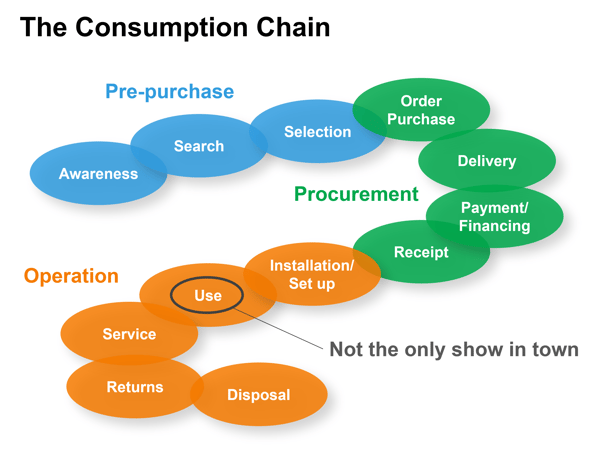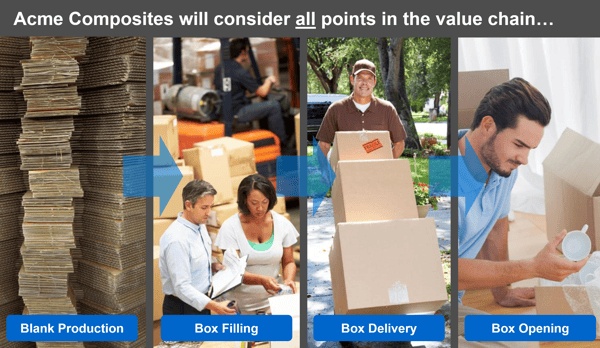This shows how customers would interact with your product... and helps you generate more assumptions to investigate.
A consumption chain is a series of steps that shows how customers would interact with your new product. It starts with pre-purchase activities and ends with how they would dispose of your product at the end of its life:
- Becoming aware of your product (or even their need for such a product)
- Searching for your product, e.g. internet searching
- Selecting your product, considering alternatives and their criteria
- Ordering or purchasing your product.
- Arranging delivery of your product
- Arranging payment or financing for this purchase
- Receiving your product
- Installing, setting up or storing your product
- Using your product for its intended purpose
- Servicing your product as needed
- Returning your product as needed
- Disposing of your product at its end of life

Why is a consumption chain helpful? Many companies just consider how their customers will use their product. But you’ve got a problem if customers can’t find your product, have it properly serviced and so on.
A consumption chain is typically created for each point in the value chain. Consider the team in our simulation, Acme Composites, trying to penetrate the e-commerce market with new packaging. They’d be wise to create a consumption chain for each of the following:
- Producers of box blanks (their direct customers)
- E-retailers that fill boxes with merchandise (such as Amazon)
- Those that ship these boxes (such as UPS)
- End-consumers that open and dispose these boxes

When you create your consumption chain in Minesweeper software, you can make one very long consumption chain with a blank "spacer" between each point in the value chain. So why are you creating these consumption chains? As you’ll see in the next article, this will help you imagine new assumptions that must be true for your project to succeed.
Keywords: consumption chain, pre-purchase, procurement, operation, value chain
